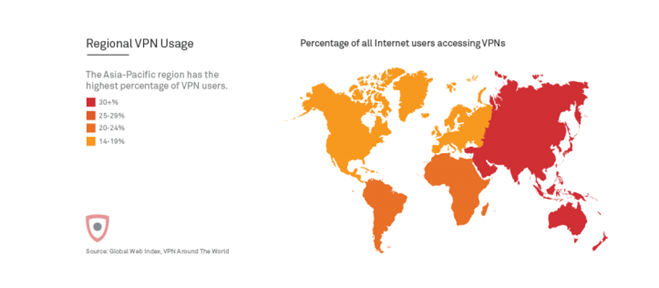A virtual private network, also commonly referred to as VPN, is undoubtedly one of the best ways to protect your data and privacy on the Internet. It isn’t for no reason that VPN use has increased dramatically across the world during the past few years!
While you already know that a VPN safeguards the traffic between your device and the Internet, preventing snoopers from getting their hands on your confidential data, do you have any idea of how it actually does that?
The technical jargon associated with VPNs is enough to get anyone confused, but fret not! In the coming paragraphs, we’ll take look at the basics in simple layman terms. But before we get to that, let’s discuss what exactly a VPN is:
What is a Virtual Private Network?
As the name implies, a VPN is a technology that creates a safe, “private” network over the less secure public Internet. It not only hides your original IP address by assigning you a new one, but also encrypts the Internet traffic you send and receive.
The result? Well, your data and online activities remain concealed from any prying eyes. Nobody can see what you’re doing online (such as the websites you visit, apps you use, files you download, etc.) or steal any kind of sensitive information from you.
It’s sort of like the network you have at home. People outside the local area network can’t sniff your data when your network is protected with WPA2 encryption. However, the main difference lies in the “virtual” aspect of a VPN for security.
Your home network is secure because it’s separated from the insecure Internet. A VPN, on the other hand, functions entirely over the Internet and therefore employs different ways to secure your data and identity. More below.
Stage 1: Authentication
So, how do you connect to a private network inside a public network like the Internet? Here’s how it goes:
On the Provider’s Side:
Your device connects to the remote access server (RAS). The RAS asks for valid credentials from a user, which it authenticates using a number of methods like CHAP, MS-CHAP, PAP, DES, and SPAP – it depends on the VPN protocol you’re using.
On the Client Side:
Client software is used by your device to establish your VPN connection and maintain the session while active. The software creates a secure tunnel to the RAS and manages the encryption to ensure the security of your connection.
Stage 2: Tunneling
VPN Tunneling is the process through which your data is sent privately on the Internet. To understand the concept, you must remember that when data is transmitted in the digital world, it’s broken down into “packets” which contain several pieces of information, including the protocol it’s using (such as HTTP, TCP, and UDP) as well as the sender’s and intended receiver’s IP address.
When a VPN sets up a tunneled connection, every single packet of data is placed within another packet before it’s transmitted over the Internet. This process is known as encapsulation. Both tunneling and encapsulation play an important part in keeping your data secure from the bad guys.
Stage 3: Encryption
However, tunneling alone isn’t enough to ensure complete privacy and security on the Internet. The next (and most important) security layer is encryption, where your data is coded into an unreadable format before it’s sent to your intended destination.
There are a variety of security protocols that VPNs use to encrypt data, but some of the most common ones include OpenVPN (Open-Source Virtual Private Network), IKEv2 (Internet Key Exchange version 2), SSTP (Secure Socket Tunneling Protocol), L2TP (Layer-2 Tunneling Protocol), and PPTP (Point-to-Point Tunneling Protocol).
Final Words
Authentication, tunneling, and encryption are three vital layers of security that VPNs employ to protect your personal data and keep your identity concealed online. That said, if you aren’t using a VPN yet (wait, why not?), now is the right time to look for one.
With mass surveillance, data retention and cyber-attacks on the rise, the responsibility of protecting what’s personal to you on the rests in your own hands. If you have anything to add, feel free to voice your thoughts in the comments section below!

